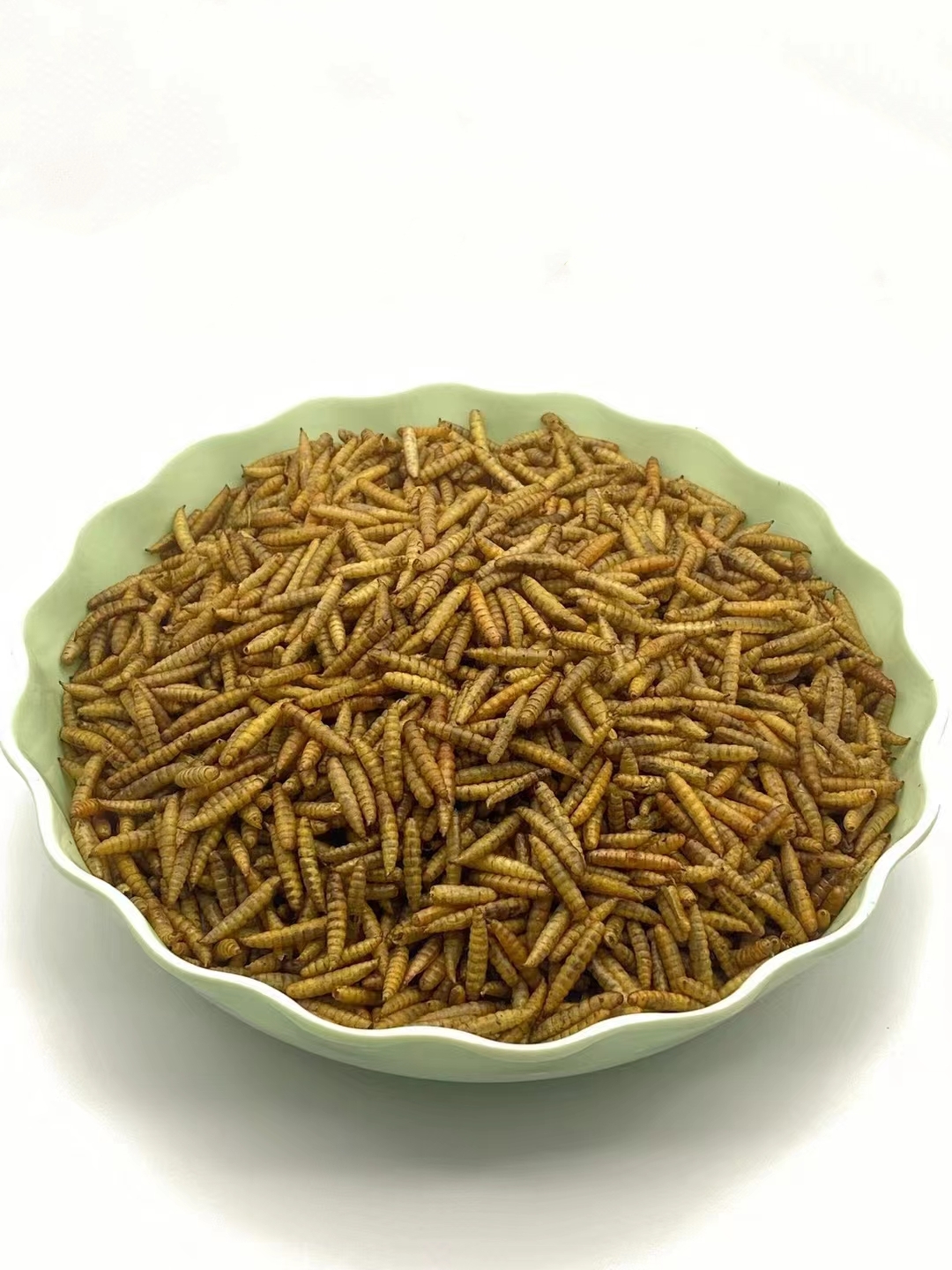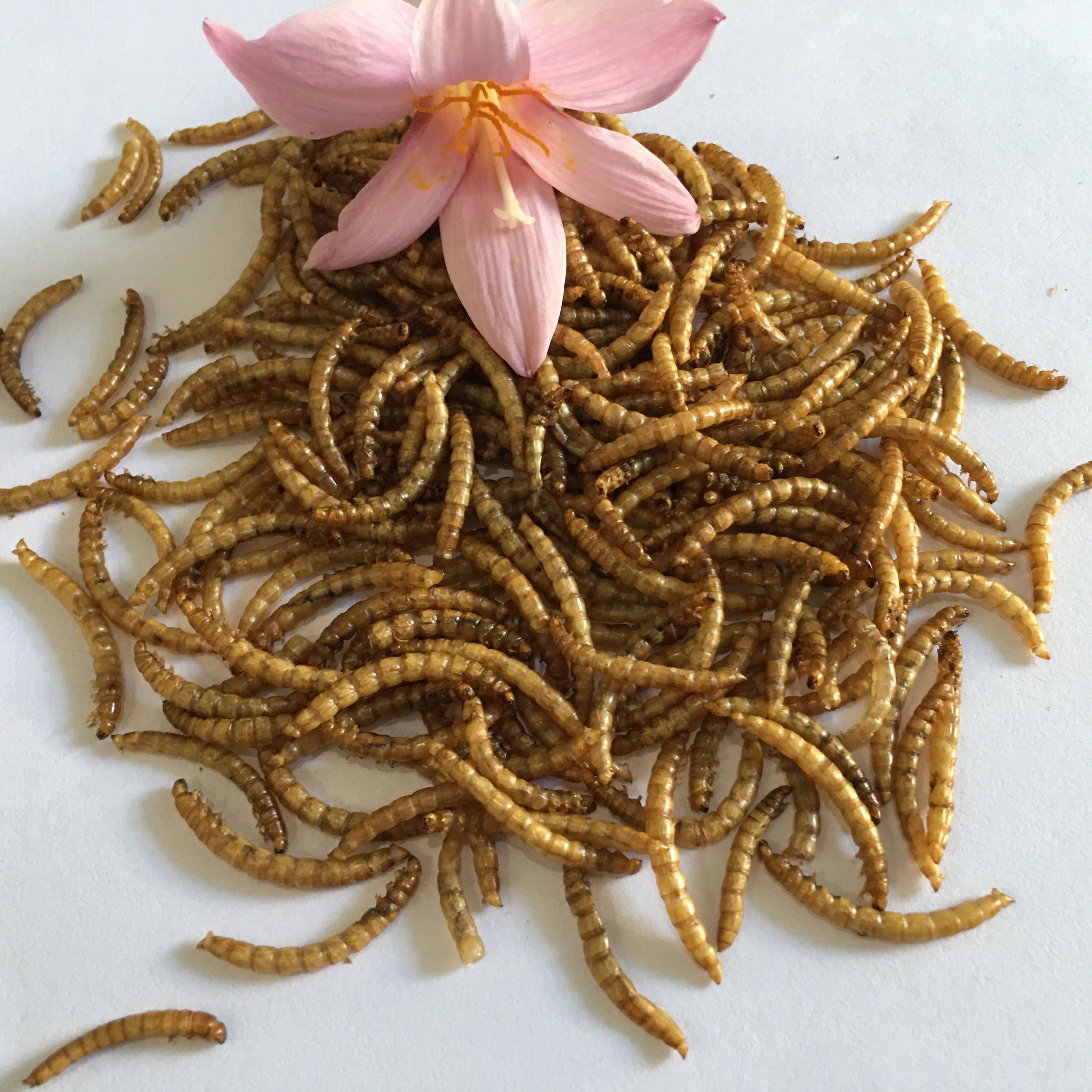The mealworm market is expected to boom after the European Union ruled that they are safe to eat. The insects are popular in most countries, but will Europeans be able to put up with their disgusting taste?
It’s a little… well, a little powdery. Dry (because it is dry), a little crunchy and not very strong, not very nice, not very bad. Maybe better with a little salt or chilli, lime – anything to make it spicy. If I want to eat it again, I’ll definitely have to drink a beer to calm my anger.
I eat mealworms. Mealworms are dried mealworms, the larvae of the beetle Tenebrio molitor. Why? Because they are highly nutritious, made up mostly of protein, fat and fibre. Because they have potential environmental and economic benefits, requiring less feed and producing less waste and carbon dioxide than other sources of animal protein. And the European Food Safety Authority (Efsa) has just declared them safe to eat.
It just so happens that we already have a big bag. We take them out to feed the birds. Batman Robin especially loves them.
But there’s no getting around the fact that they do look like maggots, because that’s what they are, and it feels more like a bushtucker experiment than a proper dish, so I thought maybe dipping them in melted chocolate might disguise them a bit…
Now they looked like maggots dipped in chocolate, but at least they tasted like chocolate. Inside was some kind of fruit-and-nut-like texture. That’s when I noticed the words on the mealworm package: “Not for human consumption.”
Dried mealworms are dried mealworms, and if they hadn’t hurt Batman they wouldn’t have killed me, would they? But it’s better to be safe than sorry, so I ordered ready-to-eat human-grade mealworms online from Crunchy Critters. Two 10g packs cost £4.98 (equivalent to £249 per kilo), and half a kilo, which we feed to the birds, costs £13.99.
The rearing process involves separating the eggs from the mated adult beetles and then feeding the larvae grains such as oats or bran, as well as vegetables. Once the larvae have grown, they need to be washed, killed with boiling water, and finally dried in the oven. Alternatively, you can also make a DIY mealworm farm at home using a plastic container with a box and feeding it oats and vegetables; there are several videos on YouTube that can teach you how to do this. Who doesn’t want to have a small, multi-layered larval factory at home?
Regardless, the EFSA opinion – which is expected to be approved across the EU and could soon see mealworm packets and mealworm powder on supermarket shelves across the continent – follows an application from a French insect feed company called Agronutris. Several other applications for insect feed are under consideration, including crickets, locusts and the tiny mealworm (also known as the little yellow mealworm, ahem).
In the UK, selling insects as human food has been legal even during the country’s EU membership (Crunchy Critters has been offering them since 2011), but the EFSA ruling ends years of uncertainty on the continent and is expected to give the mealworm market a huge boost.
Wolfgang Gelbmann, a senior scientist in EFSA’s Nutrition Division, explains the two questions the agency asks when reviewing a new food. “First, is it safe? And second, will it have a negative impact on the diet of European consumers if it is introduced into our diet? The Novel Foods Regulation does not require that new products be healthy – its aim is not to improve Europeans’ eating habits – but they must not be worse than our existing diet.”
While it is not EFSA’s job to assess the nutritional value or economic and environmental benefits of mealworms, Gelbman said it depends a lot on how they are produced. “The higher the yield, the lower the cost. A lot depends on what you feed the mealworms, and the energy and water inputs.”
Not only do insects emit less carbon dioxide than traditional livestock, they also require less water and land, and are more efficient at converting feed into protein: crickets, for example, require only 2 kilograms of feed for every kilogram of body weight gained, according to the UN’s Food and Agriculture Organization.
Gelbman doesn’t dispute the protein content of mealworms, but he says it’s not as high as meat, milk or eggs, “rather it’s a high-quality plant protein like canola or soy.”
Leo Taylor, co-founder of Bug, a UK company that plans to launch insect feeding kits – creepy, ready-to-eat meals – is convinced. “Mealworms can be reared at a much higher rate than regular livestock. You can also feed them fruit and vegetable scraps.”
But are they really any good? “It depends on how you cook them. We think they’re delicious, and we’re not the only ones who think that. 80% of the world’s countries eat insects in some form or another – more than 2 billion people – not because they have to, but because they taste good. I’m half Thai and grew up in Southeast Asia, so I ate insects as a kid.”
He has a delicious recipe for Thai mealworm and butternut squash soup that will be ready when my mealworms arrive. “It’s such a heartfelt and thoughtful meal for this time of year,” he says. It sounds perfect; I just wonder if my family would approve.
Giovanni Sogari, a researcher in social and consumer behaviour at the University of Parma and the author of a book on edible insects, says the disgust factor is the biggest barrier. “Insects have been eaten all over the world since the dawn of humanity; there are currently 2,000 species considered edible. But of course, in Europe, the US and the Northern Hemisphere, consumers are disgusted by insects, mainly because of disgust. Simply because we don’t consider them food, we don’t want to eat them.”
Sogari says research shows that if you’ve encountered edible insects while on holiday abroad, you’re more likely to try them again. Plus, people in northern European countries are more tolerant of insects than those in Mediterranean countries. Age is also a factor – older people are less likely to try them. “If younger people like it, the market will grow,” he says. He cites the growing popularity of sushi as an example; if raw fish, caviar and seaweed can do it, “who knows, insects could become popular too.”
“If I show you a picture of a scorpion and a picture of a lobster or some other crustacean, it won’t make much of a difference,” he says. But it’s still easier to feed the bugs if they’re unrecognizable. Mealworms go into flour, pasta, muffins, burgers, smoothies; I thought I’d start with something less obvious: maggots.
But these are freshly bought human-grade mealworms, off the internet. Well, dried off the internet and delivered to your door. They look exactly like bird seed. They taste like bird seed, too — which is to say, there aren’t that many of them. At least not yet. But I’m going to make a Leo Taylor Cream of Pumpkin Soup with them, with onion, garlic, a little green curry powder, coconut milk, broth, a little fish sauce, and lime. I baked half the mealworms in the oven and added a little red curry paste, because we don’t have any Thai spices, so I’m going to cook half of them in the soup; the rest I’m going to sprinkle with a little cilantro and chilli.
You know what? It was actually pretty good. Sour. You couldn’t tell anything was moving in the soup, but think of all that delicious extra protein. And the garnish gave it a nice crunch and added freshness. Next time I’d go with less coconut… if there’s a next time. We’ll see. Dinner!
“Ouch!” screamed the six- and eight-year-olds. “Ugh!” “What…” “No way! Or worse. Rebellion, tantrums, crying and empty stomachs. These little ones, maybe this is too much. Maybe I should just pretend they’re shrimp? Honestly, they’re not the most open-minded when it comes to food – they won’t even eat fish if it looks too fishy. Maybe we should start with pasta, burgers or muffins. Or go on a more exciting holiday. Because even if the EFSA says they’re safe, it won’t help – it seems the unsophisticated European family isn’t ready to take on mealworms.
Post time: Jun-24-2025


